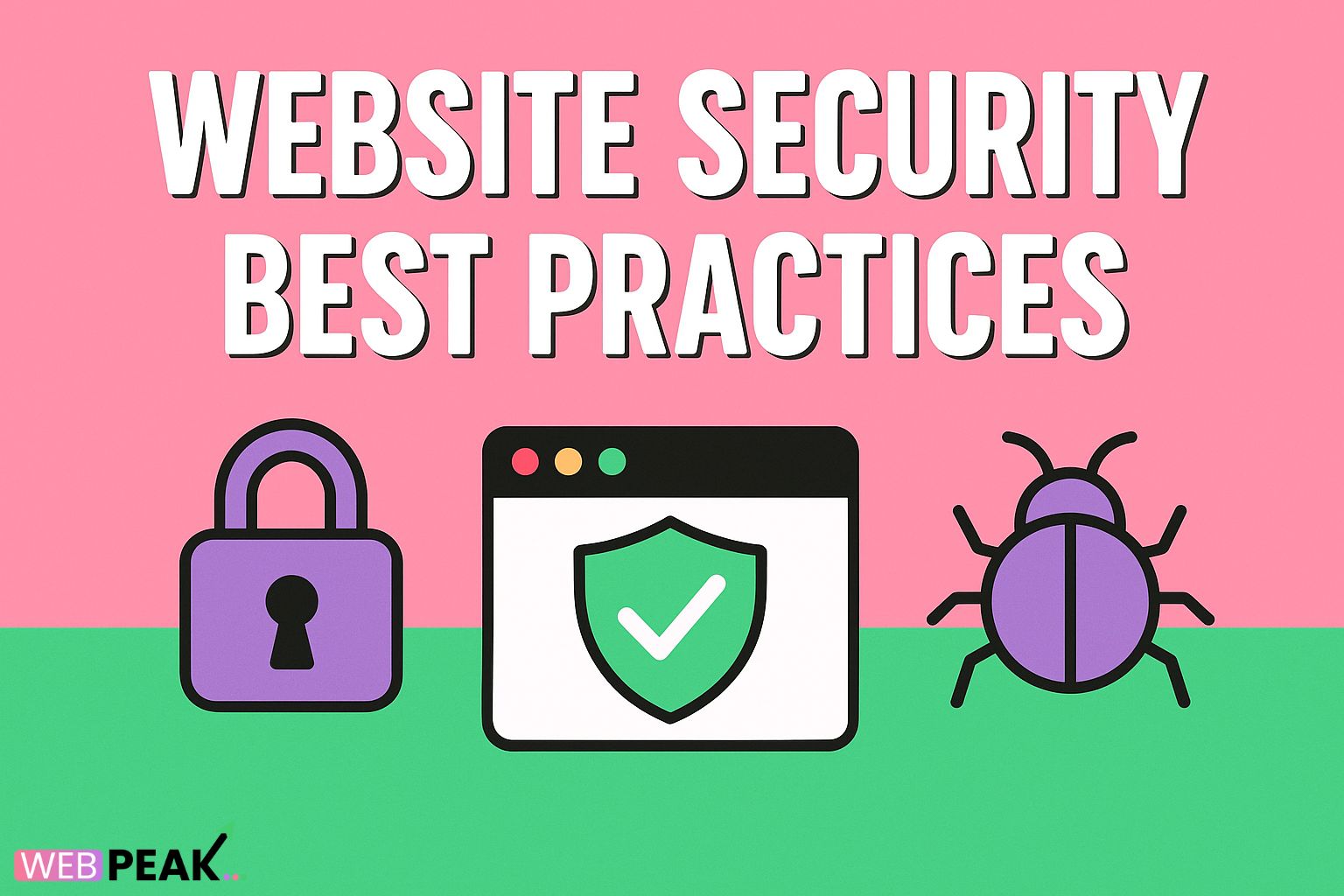Website Security Best Practices
In today’s digital landscape, website security is no longer an optional concern—it’s an absolute necessity. With the increasing number of cyberattacks, data breaches, and sophisticated hacking attempts, protecting your website should be a top priority. A compromised website can result in financial losses, damaged reputation, loss of customer trust, and even legal consequences. Fortunately, implementing robust security measures can help safeguard your site, data, and users. Below are some of the most effective website security best practices every business should follow.
Why Website Security Matters
A secure website does more than protect data; it builds trust with visitors and customers. People are more likely to engage with and purchase from a business that demonstrates a commitment to protecting their personal and financial information. Additionally, search engines like Google prioritize secure websites, making security an essential factor in SEO and online visibility. Neglecting website security could lead to penalties, blacklisting, or lost business opportunities.
Use HTTPS and SSL Certificates
One of the most basic yet critical steps to secure your website is enabling HTTPS through an SSL certificate. HTTPS encrypts the communication between your website and its visitors, ensuring sensitive data like passwords, credit card details, and personal information cannot be easily intercepted by attackers. Without HTTPS, browsers may flag your website as “Not Secure,” which can discourage users from engaging with your site.
Keep Software and Plugins Updated
Outdated software and plugins are among the most common entry points for cybercriminals. Developers frequently release updates to patch security vulnerabilities, and failing to apply these updates leaves your site exposed. Whether it’s a content management system (CMS), third-party plugin, or server software, make sure all components are updated regularly. Automating updates where possible can reduce the risk of oversight.
Implement Strong Authentication
Weak or reused passwords are a major security risk. Ensure all user accounts associated with your website, especially administrative ones, use strong, unique passwords. Encourage multi-factor authentication (MFA), which requires a second form of verification in addition to a password. MFA significantly reduces the likelihood of unauthorized access, even if login credentials are compromised.
Secure Web Hosting
Your hosting provider plays a crucial role in website security. Choose a reliable host that prioritizes security features, such as firewalls, malware scanning, DDoS protection, and regular backups. Shared hosting can sometimes expose your website to risks if other sites on the same server are compromised. For businesses handling sensitive information, a dedicated or virtual private server (VPS) may provide an extra layer of protection.
Regular Website Backups
Backups are your safety net in the event of an attack, data corruption, or accidental deletion. Implement a regular backup schedule and ensure that copies are stored securely offsite or in the cloud. Quick access to backups allows you to restore your website with minimal downtime and data loss. Automated backup solutions can provide peace of mind and save valuable time.
Protect Against SQL Injection and XSS Attacks
SQL injection and cross-site scripting (XSS) are common vulnerabilities that allow attackers to manipulate your site’s database or inject malicious scripts. To prevent SQL injection, use parameterized queries and prepared statements. For XSS, sanitize user inputs and use proper output encoding. Web application firewalls (WAFs) can also detect and block suspicious requests before they reach your server.
Limit User Access and Permissions
Not everyone who interacts with your website needs full administrative privileges. Adopt the principle of least privilege by granting users only the access necessary to perform their roles. Limiting permissions reduces the potential damage in the event of compromised accounts. Additionally, make it a habit to remove inactive or outdated user accounts promptly.
Conduct Regular Security Audits
Website security is not a one-time setup but an ongoing process. Regular security audits help identify vulnerabilities before attackers exploit them. Conduct penetration testing, monitor log files, and use vulnerability scanners to stay ahead of potential threats. A proactive approach ensures your security measures remain effective as new risks emerge.
Monitor for Malware and Threats
Hackers often target websites with malware to steal data, redirect traffic, or use resources for malicious activities. Invest in monitoring tools that scan for malware, suspicious activities, and unauthorized changes. Real-time alerts can help you take immediate action to mitigate threats before they escalate.
Educate Your Team
Security is not just about technology—it’s also about people. Many security breaches occur due to human error, such as falling victim to phishing emails or misconfiguring systems. Educate your team about safe online practices, how to recognize potential threats, and the importance of following security protocols. Regular training reduces risks and fosters a culture of security awareness.
Partner with Experts for Ongoing Protection
Implementing these practices can significantly strengthen your website security, but ongoing protection often requires professional expertise. Hiring specialists ensures your website stays ahead of emerging threats and complies with the latest security standards. If you’re looking for professional support, you can WEBPEAK for web development services. WEBPEAK is a full-service digital marketing company offering Web Development, Digital Marketing, and SEO Services to help businesses build secure, high-performing online platforms.
Conclusion
A secure website protects your business, your customers, and your reputation. By implementing best practices such as HTTPS, strong authentication, regular backups, and ongoing monitoring, you can reduce vulnerabilities and create a safer online experience. While website security requires continuous effort, the investment pays off in trust, visibility, and long-term success. Whether you’re a small business or a large enterprise, prioritizing website security today will safeguard your digital presence for years to come.





